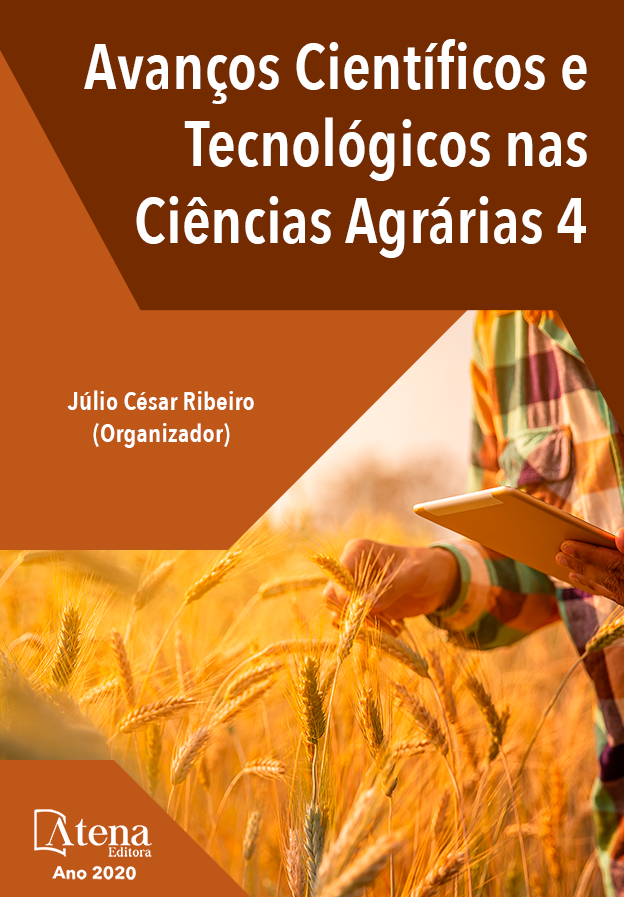
INTERAÇÃO GENÓTIPO X AMBIENTE DE CULTIVO EM CULTIVARES DE ALFACE ( Lactuca sativa) NA REGIÃO DO SUL DO PARÁ
Com objetivo de avaliar quais cultivares de alface (Lactuca sativa L.) são indicados para o cultivo nas condições edafoclimáticas e em qual ambiente de cultivo podem ser implantadas no município de Conceição do Araguaia- PA, este estudo foi conduzido no campo experimental CEAGRO, pertencente ao Instituto Federal do Pará-IFPA. Utilizou-se o delineamento em blocos casualizados, por 35 tratamentos e 3 repetições, o tratamento é um fatorial de 7 x 5; um experimento contendo 7 ambientes: Ambiente I: (sombrite 40% de interceptação de luz e cobertura superficial de palhada de arroz); Ambiente II: (sombrite 40% de interceptação de luz sem cobertura superficial de palhada de arroz); Ambiente III: (filme plástico de 100 micras com proteção anti-UV (ultravioleta) com cobertura de palhada de arroz); Ambiente IV: (filme plástico de 100 micras com proteção anti-UV (ultravioleta) sem cobertura superficial de palhada de arroz); Ambiente V: (manta agrotêxtil “TNT” branca e gramatura de 30% com cobertura superficial de palhada de arroz); Ambiente VI: (manta agrotêxtil branca com gramatura de 30% sem cobertura superficial de palhada de arroz); e, Ambiente VII: (campo aberto com cobertura superficial de palhada de arroz) e 5 cultivares de alface crespa (SVR 2005, Crocantela, Solaris, Vera e Brunela). Foram avaliados a massa fresca da parte aérea (g/planta) (MFPA); massa seca da parte aérea (g/planta) (MSPA); altura; base e topo. Assim, utilizando-se ambientes propícios ao cultivo e adaptação mediante os resultados, verificou-se que, comparativamente, a maioria das cultivares apresentam valores similares. As que obtiveram melhor desenvolvimento foram a Crocantela, com médias chegando a 1.188,4g, e SVR 2005, com 1.284,7g, tendo uma maior produção de matéria fresca, e índices significativos. E as coberturas que mais influenciaram nos resultados positivos das mesmas foram: filme plástico de 100 micras com proteção anti-UV e manta agrotêxtil “TNT” de coloração branca e gramatura de 30%.
INTERAÇÃO GENÓTIPO X AMBIENTE DE CULTIVO EM CULTIVARES DE ALFACE ( Lactuca sativa) NA REGIÃO DO SUL DO PARÁ
-
DOI: 10.22533/at.ed.3372028093
-
Palavras-chave: Túnel baixo, adaptabilidade e hortaliça.
-
Keywords: Lowtunnel, Adaptability, Vegetable
-
Abstract:
With the objective of evaluating which lettuce cultivars (Lactuca sativa L.) are indicated for cultivation in edaphoclimatic conditions and which cultivation environment can be implemented in the municipality of Conceição do Araguaia, this study was conducted in the CEAGRO experimental field, wich belongs to the Instituto Federal do Pará-IFPA. Randomized block design was used for 35 treatments and 3 repetitions, treatment is a 7 x 5 factorial; a experiment containing 7 environments: Environment I: (40% interception shade net with surface cover of rice straw); Environment II: (40% interception shade net without surface cover of rice straw); Environment III (100 micron anti uv greenhouse plastic film with surface cover of rice straw); Environment IV (100 micron anti uv greenhouse plastic film without surface cover of rice straw); Environment V (AG-30 floating row cover with surface cover of rice straw); Environment VI (AG-30 floating row cover without surface cover of rice straw); Environment VII (open field cultivation with surface cover of rice straw) and 5 cultivars of crisphead lettuce (SVR 2005, Crocantela, Solaris, Vera e Brunela). Were evaluated shoot fresh mass (g/plant) (SFM); shoot dry mass (g/plant) (SDM); height; base and top. Low tunnel is a controlled cultivation method widely used for lettuce plantation, providing protection and allowing to measure the adaptability of cultivars to the climate. Thus, using environments conducive to cultivation and adaptation through the results, it was verified that, comparatively, most cultivars have similar values and the ones that obtained better yield were Crocantela, with average weight of 1.188,4g, and SVR 2005 weighting about 1.284,7g that have a greater productions of fresh matter and significant indices. The coverages that most influenced the positive results of these cultivars were: 100 micron anti uv greenhouse plastic film and AG-30 floating row cover that provided a favorable microclimate for cultivars.
-
Número de páginas: 16
- Lorrany Maria Ferreira dos Santos
- Leonardo Alves Lopes
- Hiala Loiane de Sousa Silva
- Vitor da Silva Barbosa
- Marcelo da Costa Ferreira
- Suelayne Rodrigues da Silva


